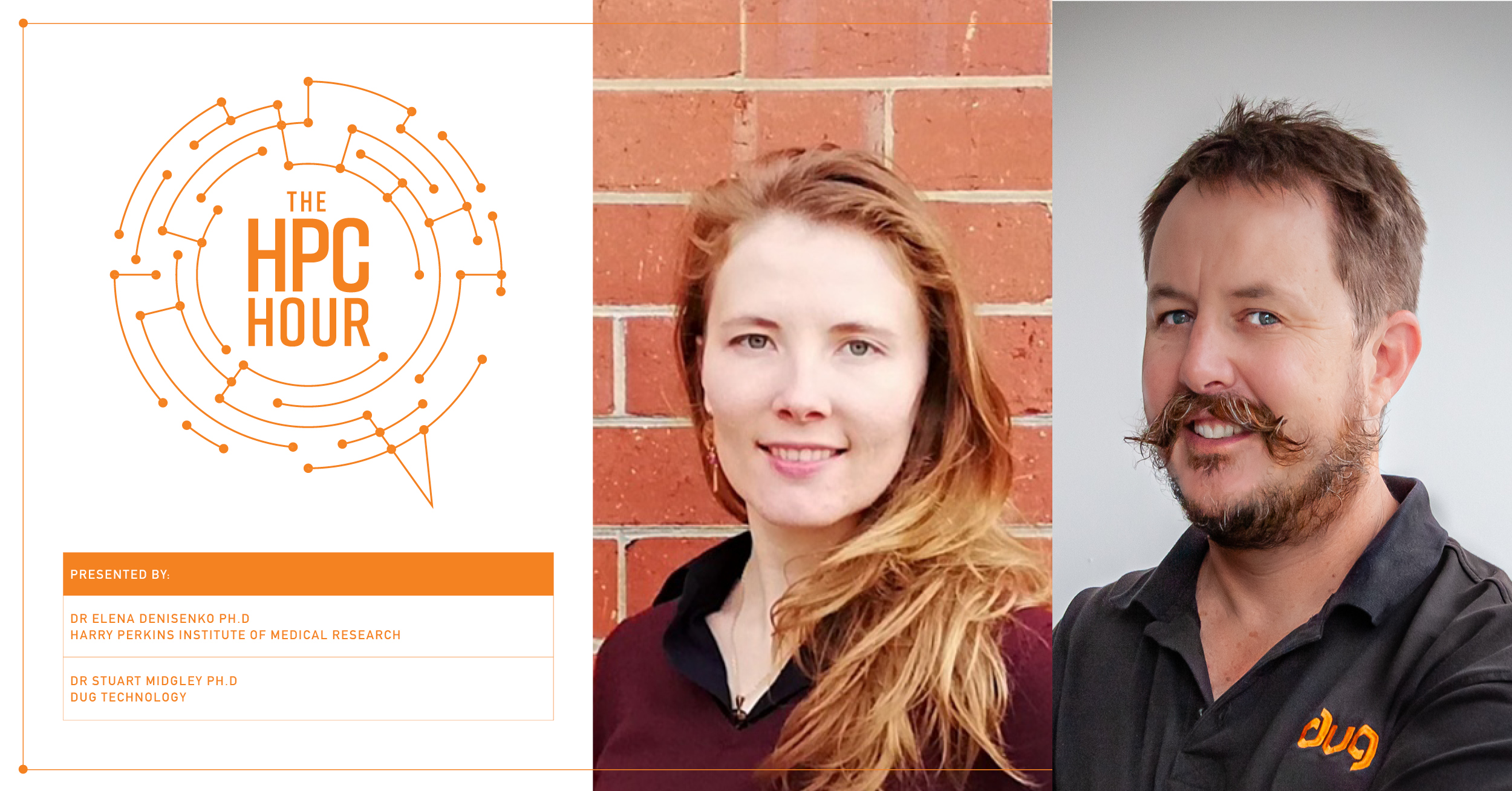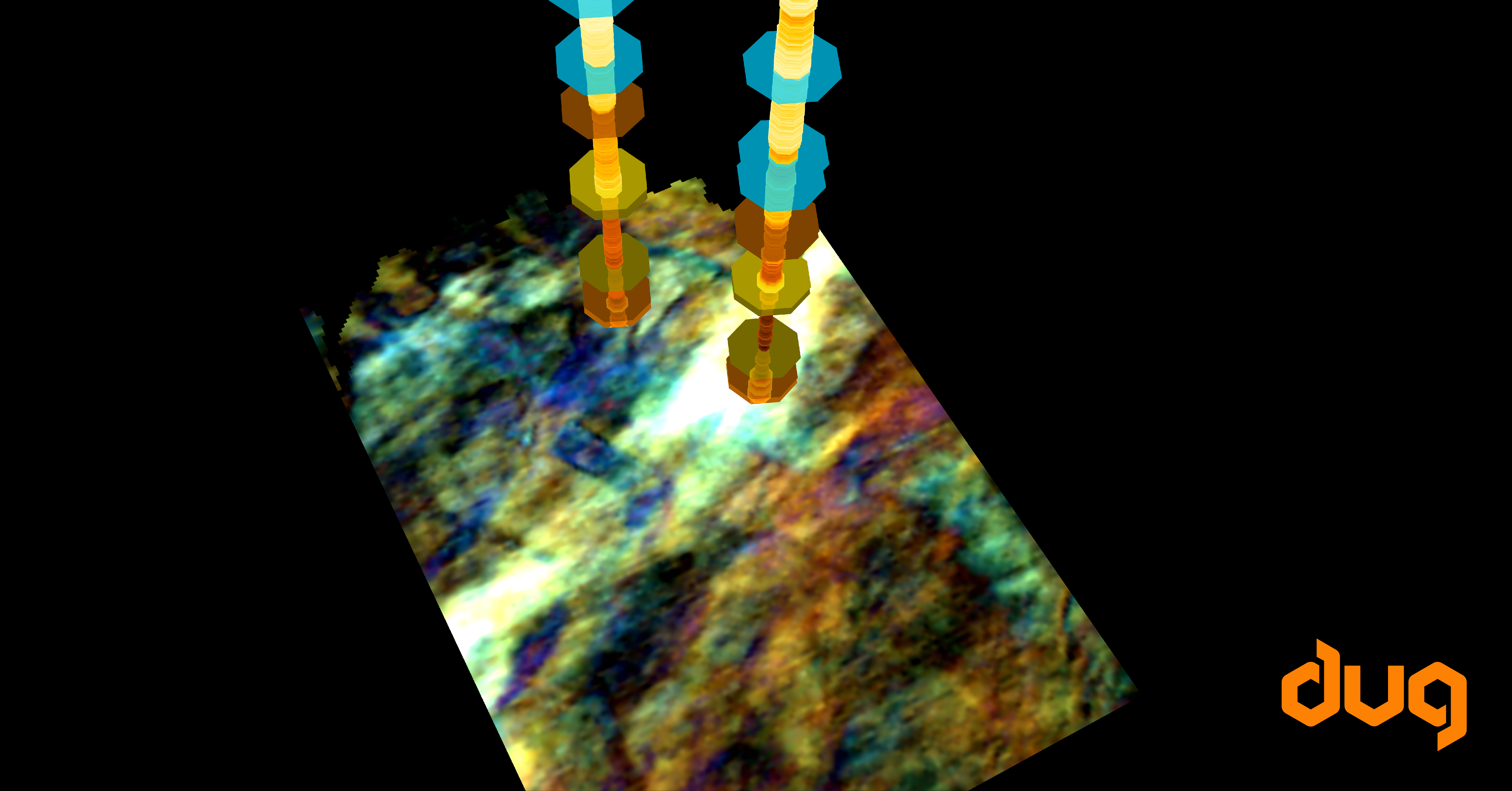Today is our Data Science Week event: “Data Science Evolution of HPC: The Cheetah is Changing its Spots” presented by Dr Stuart Midgely DUG Technology CIO and Dr Elena Denisenko, Bioinformatician at Harry Perkins Institute of Medical Science.
The following article from the Harry Perkins Institute News site gives some great background to the event.
It’s time to talk about bioinformatics and its influence on high-performance computing (HPC) as well as the importance of data analysis and interpretation in medical research.
As part of Data Science Week events, 10-14 May, Perkins’ bioinformatician Dr Elena Denisenko will join Dr Stuart Midgely, DUG CIO, physicist and high-performance computing expert to look at HPC from a different angle.
Traditionally high-performance computing has been the realm of physicists, chemists and astrophysicists who have dominated the usage of the largest computing systems in the world. Then along comes non-traditional HPC users like bioinformaticians who use and analyse data in a completely new and novel way.
Bioinformatics is a multidisciplinary field that integrates principals from mathematics, statistics, computer science and biological sciences. The role of bioinformaticians in medical research is to apply information technology to extract knowledge from biomedical data.
HPC systems are now evolving to meet bioinformaticians’ needs, developing new hardware and software products, allowing their more sophisticated data usage.
Dr Elena Denisenko is Bioinformatics Lead at the Perkins Systems Biology and Genomics Laboratory. She works in the fields of single-cell sequencing and spatial transcriptomics data analysis and interpretation. Most of the time her work is on cancer projects, where they analyse each tumour at the very fine level of looking at each individual cell separately.
“Our goal is to characterise those individual cells, understand different types of cancer cells that are present within one tumour, and how exactly all these cells talk to each other to promote tumour growth and treatment resistance,” says Elena.
Bioinformatics data manipulation strategies assist to find better treatments for the major diseases, like cancer, that our families face.
Elena says that bioinformatics is the main instrument that allows us to make sense of tens of thousands of values measured for thousands of individual cells.
“One of the strategies we use is to check what genes are turned on specifically in different types of cancer cells and how these genes can help to find treatments that kill specifically these types of cancer cells.”
In her presentation with Dr Midgely titled Data Science Evolution of HPC: The Cheetah is Changing its Spots, Elena will talk about computational needs and data manipulation strategies that are specific to bioinformatics.
“It turns out, these strategies for bioinformatics are different from that of physicists, chemists and astrophysicists. The HPC architecture designed for them does not necessarily work for us.
“The idea of the presentation is to convey these differences and maybe prompt some further changes and evolution of high-performance computing,” Elena says.
At the Perkins, the Systems Biology and Genomics Laboratory team (led by Professor Alistair Forrest) use and develop cutting-edge technologies that generate a lot of biological data (e.g. from RNA sequencing).
As a bioinformatician, Elena’s job is to analyse these data using technology-specific computational approaches, to interpret it, and to translate it into biological or medical insights.
“For example, in one of the main projects I’m working on at the moment we have uncovered that very different types of cancer cells are sitting very close to each other in a very small chunk of an ovarian tumour. We believe that this diversity of cancer cells is the cause of treatment resistance in some ovarian cancer patients, and we are looking for ways to tackle this resistance.
“With time, the underlying technologies are developed further and improved. Notably, they start producing larger volumes of data.
“This gives us better resolution and we start uncovering things we couldn’t even imagine some time ago, but it becomes more and more computationally demanding to process them,” says Elena.
With technological advancements and HPC evolving to address bioinformaticians’ needs, it’s now possible to get details about the biology of each individual cell, look at trajectories of cell development, or what messages individual cells send to each other – getting information about thousands of cells simultaneously. Whereas, just a decade ago the standard approach was to take a tumour chunk and look at the average measurements of all of its cells.
Data Science Week aims to bring together a community of data scientists, technologists, visualisers, educators and more to raise awareness around data science, increase the uptake, and discuss trending topics and ideas.
The presentation Data Science Evolution of HPC: The Cheetah is Changing its Spots is 13 May 3-4pm in West Perth, free, and open to register online at https://datascienceweek.dug.com.




































